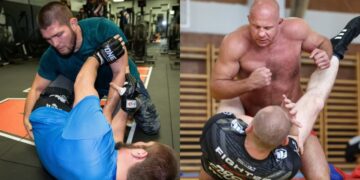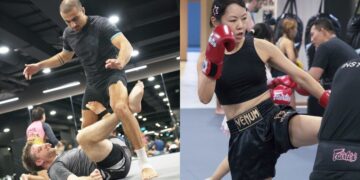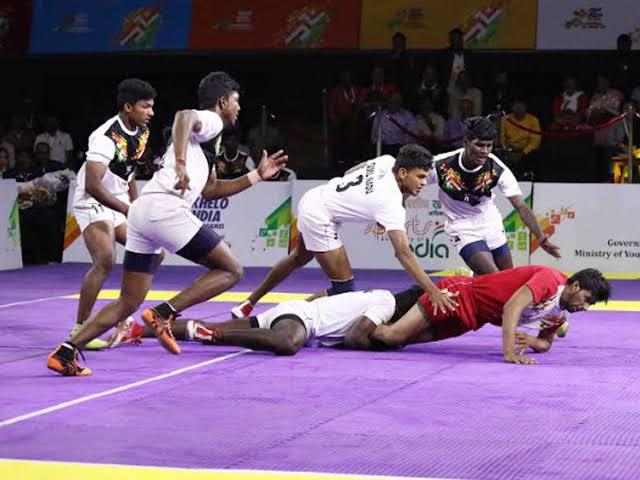
Modern work often means long hours at a desk, especially in busy cities where office life is the norm for many professionals. While sitting may feel harmless, remaining in one position for extended periods can lead to fatigue, stiffness, and lower energy levels. Finding time for the gym may not always be possible, but the good news is that you do not need to leave your office to stay active. Desk workouts are short, practical exercises you can do right at your workstation. They help keep your body moving, improve focus, and boost overall well-being.
Why Desk Workouts Matter
Most people spend a large portion of their day seated in front of screens. This sedentary lifestyle can affect posture, circulation, and even productivity. Over time, it contributes to low energy and physical discomfort that makes work harder than it needs to be.
Desk workouts provide a simple solution. They break up long hours of sitting with short bursts of movement. Even a few minutes of exercise can improve blood flow, reduce stiffness, and help you feel more refreshed. For many office workers, these small sessions are easier to stick with than longer workouts outside of work hours. Beyond physical benefits, desk workouts also sharpen concentration and reduce stress, making the workday more productive.
Upper Body Desk Workouts
The upper body often takes the brunt of desk strain. Hours of typing and hunching over a computer lead to tight shoulders and neck tension. Simple exercises at your desk can ease this discomfort while strengthening muscles.
1) Shoulder Rolls
Sit upright in your chair and roll your shoulders slowly in a circular motion. Repeat ten times forward and ten times backward. This simple movement loosens stiff muscles and encourages better posture.
2) Desk Push-Ups
Stand at arm’s length from your desk and place your hands shoulder-width apart on the surface. Lower your chest toward the desk, keeping your body straight, then push back up. Do 10 to 15 reps. This exercise strengthens the chest, arms, and shoulders without requiring floor space.
3) Tricep Dips
If you have a sturdy chair without wheels, place your hands on the edge of the seat, step your feet forward, and lower yourself down until your elbows reach 90 degrees. Push back up to the starting position. Aim for 8 to 12 reps. This movement tones the back of the arms while also activating the core.
These upper-body moves are quick and can be done during short breaks. They reduce tension while helping you maintain strength in the muscles most affected by desk work.
Lower Body Desk Workouts
Sitting all day leaves the legs underused. Simple desk exercises for the lower body improve circulation, reduce stiffness, and build strength.
1) Seated Leg Raises
While seated, straighten one leg and hold it parallel to the floor for a few seconds before lowering it back down. Alternate between legs, completing 10 reps on each side. This strengthens the quads and engages the core.
2) Calf Raises
Stand up behind your chair or desk, keeping your hands lightly resting for balance. Rise onto your toes and hold for a second before lowering back down. Repeat 15 to 20 times. This improves circulation and builds lower leg strength.
3) Chair Squats
Stand up in front of your chair, lower yourself down as if to sit, and then stand back up before actually touching the seat. Perform 10 to 12 reps. Chair squats activate the glutes and thighs while reinforcing proper movement patterns.
Adding these simple exercises to your routine ensures that your legs stay active even during long workdays.
Core Desk Workouts
A strong core supports better posture and reduces strain on the back, which is essential for desk workers. These exercises can be done in just a few minutes.
1) Seated Knee Lifts
Sit tall and place your hands on the edge of your chair for support. Lift your knees toward your chest and lower them back down without touching the floor. Alternate your knees and do 10 to 12 reps. This strengthens the abs and hip flexors.
2) Twists In Chair
Sit upright with feet flat on the floor. Place your hands lightly on the backrest of your chair and slowly twist your torso to one side, hold for a few seconds, then twist to the other side. Repeat 6 to 8 times. This exercise activates the obliques and improves spinal mobility.
3) Isometric Core Hold
While seated, tighten your abdominal muscles as if bracing for impact. Hold the tension for 10 to 15 seconds, then relax. Repeat several times throughout the day. This subtle drill builds core stability and can be done discreetly.
These moves strengthen the midsection, which is crucial for sitting with good posture and avoiding fatigue.
Stretching And Mobility At The Desk
Stretching is just as important as exercise. It keeps muscles flexible and prevents stiffness from long hours of sitting.
1) Neck Stretches
Tilt your head gently toward your shoulder and hold for 15 to 20 seconds, then switch sides. This eases tightness caused by looking at screens.
2) Wrist And Finger Stretches
Extend one arm forward, palm facing out, and gently pull back on your fingers with the other hand. Hold for 15 seconds, then switch. Repeat with palms facing inward. These stretches help counteract typing fatigue.
3) Spinal Stretch
Sit tall and extend your arms overhead. Reach upward while taking deep breaths, then slowly release. This stretch lengthens the spine and refreshes posture.
Doing these stretches throughout the day helps prevent common desk-related aches and keeps you energized.
Final Thoughts
Desk workouts are not meant to replace full exercise sessions, but they are an excellent way to stay active when time and space are limited. Just a few minutes of movement every hour can make a significant difference in how you feel and perform throughout the day.
By incorporating simple upper body, lower body, core, and stretching routines, office workers in Singapore and beyond can improve posture, boost circulation, and stay energized without leaving their desks. These small but consistent efforts add up to better health, sharper focus, and more productive workdays.
So the next time you find yourself sitting for hours, take a moment to move. Your body and mind will thank you for it!
You may also like:
The Beginner’s Guide To Jumping Rope
Simple, portable, and brutally effective, the jump rope is a classic conditioning tool used by boxers, martial artists, and athletes across generations. It improves cardiovascular endurance, builds coordination, burns calories, and develops footwork in ways…
In BJJ, Submission Grappling, and Wrestling, improving your ability to explode into takedowns doesn’t just add more brute strength to your takedowns, it also allows you to close distances quicker as your entry speed increases….
Flexibility plays a crucial role in how well you can execute many fighting techniques. For example, you need a certain level of hip flexibility to throw high kicks in Muay Thai or to use the…
Your isometric strength plays a role in martial arts like Brazilian Jiu-Jitsu, Wrestling, Boxing, and Muay Thai, whether you realize this or not. Anything that requires holding a position while fighting against tension and other…
Combat sports demand a fluid synergy of raw power, speed, mobility, balance, and agility. Animal movements are one of many ways fighters can strengthen their bodies to perform optimally. These exercises involve mimicking the movements…
Running has historically been a considerable portion of many martial arts fighters’ training regimens, but it’s not the only way to get your heart pumping and build up your cardiovascular endurance. Many non-traditional workouts challenge…
Most people start martial arts for the physical benefits, to get fitter, stronger, or learn how to defend themselves. But talk to anyone who has been training for months or years, and you’ll often hear…
Ask any Singaporean about life in the city, and one theme pops up again and again: convenience. Whether it’s food delivery apps, cashless payment systems, or 24-hour services, Singapore is built around efficiency. The same…
Muay Thai is often called the art of eight limbs, using fists, elbows, knees, and kicks in fluid combinations. While power and technique get a lot of attention, rhythm is what ties everything together. Fighters…
In BJJ, the lasso guard is a variation of open guard that uses your leg to wrap around and control your opponent’s arm, “lassoing” their arm with your shin hooked behind their tricep and grip…
In martial arts, improvement does not come only from sparring or drilling techniques. Another powerful tool for growth is watching fight replays. Whether its a professional bout streamed worldwide or a recorded sparring session in…
For a long time, half guard was seen as a “last resort” position, a place you ended up when your guard was getting passed. But modern BJJ flipped the script. Today, the half guard is…




































